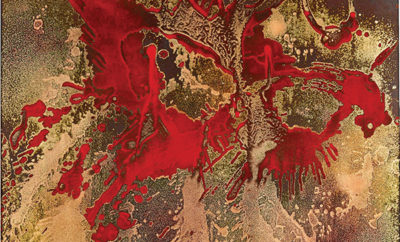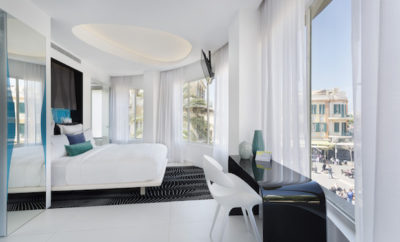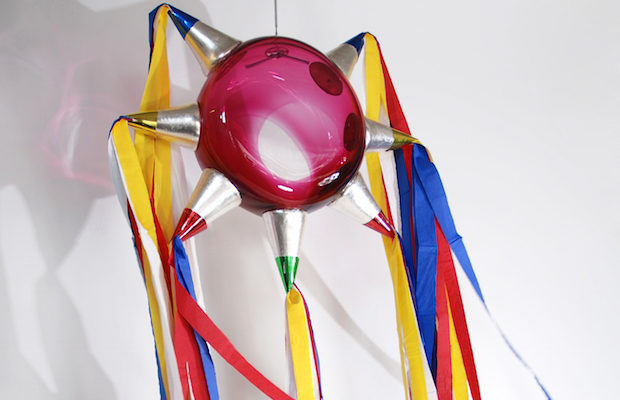 Jaime Guerrero, Glass piñata from the Broken Dreams installation, 2017. Madison Metro photograph
Jaime Guerrero, Glass piñata from the Broken Dreams installation, 2017. Madison Metro photograph
Exhibition
Craft that Crosses the Americas
THIS YEAR’S PACIFIC STANDARD TIME: LA/LA initiative, a project of the Getty, is enlisting seventy-five cultural institutions across Southern California to tell the story of Latin American artists in Los Angeles. As part of it, the Craft in America Center in Los Angeles is mounting Mano-Made: New Expression in Craft by Latino Artists, a trio of exhibitions featuring the work of Californian Chicano artists Jaime Guerrero, Gerardo Monterrubio, and Consuelo Jimenez Underwood that will run sequentially, starting August 26. “This is the first time we’re looking outside ‘America’ to ‘Americas,’” says Emily Zaiden, Craft in America Center director and curator of the three shows.
Guerrero is one of only a handful of glassblowers who create life-size glass figures. He blows basic forms, then sculpts details into the soft furnace glass using traditional glassblowing tools as well as silverware—a fork for hair, a table knife to smooth facial features. Racing from glory hole to bench and back again, he assembles his creations hot, piece by piece, until a whole human body in glass protrudes from the end of his blowpipe. His installation Broken Dreams will consist of four glass children blindfolded or covering their eyes and batting at a piñata that symbolizes their hopes for a new, happy life in the US. Guerrero would like to attract attention to the plight of children detained at the border each day, a group he believes is almost invisible—like glass.
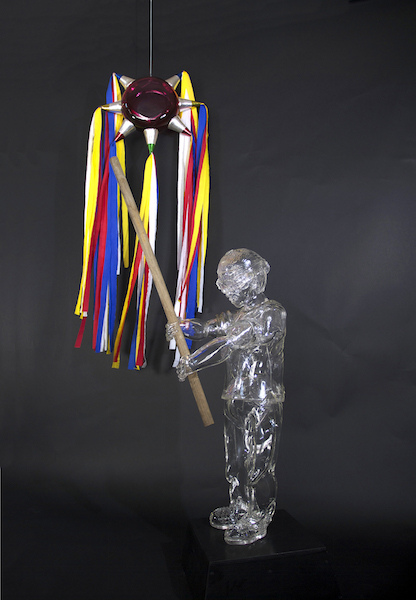
Jaime Guerrero, Glass piñata and child from the Broken Dreams installation, 2017. Madison Metro photograph
An assortment of illustration-covered ceramic vessels will be on view in the second show, opening October 14—the work of Gerardo Monterrubio. “When I was young, I wanted to have an authentic or independent existence,” he says. He sees a connection between that desire and the art of manliness, particularly the hard-nosed machismo of his bull-rider grandfather. Monterrubio is critical of this ethos, but tough love has a place in his practice. In addition to the usual kneading and folding, to prepare some of his forms Monterrubio beats the clay with pieces of wood. “When you’re hitting clay, you’re compressing the clay so it can withstand the heat so it doesn’t crack,” he explains. What doesn’t kill you . . .
“I love living on borders,” says Consuelo Jimenez Underwood, the subject of the final exhibition, which runs from December 2 to January 20, 2018. She splits her time between Cupertino and middle-of-nowhere Gualala in Northern California, living both in civilization and apart from it. The type of work she makes abets unplugging: large fiber pieces composed of materials available almost anywhere, such as netting, plastic raffia, barbed wire, and, her favorite, the humble safety pin. On view at the center will be Frontiera, a site-specific mixed-media depiction of the US-Mexico border surrounded by large, painted flowers and the footprints of animals from the region. “Start by respecting the land,” she says. “When you see people who don’t respect the land they’re dead. They’re zombies. They may be powerful but they’re dead.”
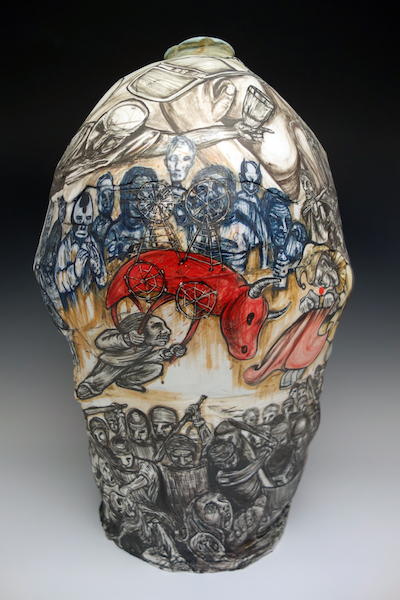
Gerardo Monterrubio, Torito, 2014. Jonathan Castillo photograph
Craft in America also produces a Peabody Award–winning PBS documentary series of the same name, and Guerrero and Monterrubio will appear in an episode premiering this fall called “Borders and Neighbors.” “There are two kinds of borders,” a woman in the episode’s teaser says, “borders in the mind and physical borders.” Later, as a man speaks in Spanish, the raison d’être for Mano-Made is given in subtitles: “Art is universal because there are no borders.”


